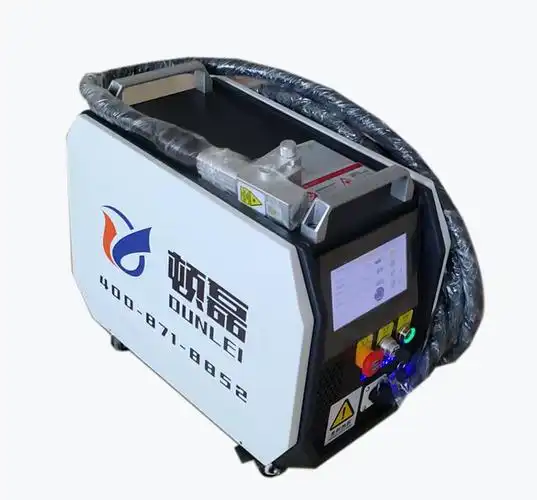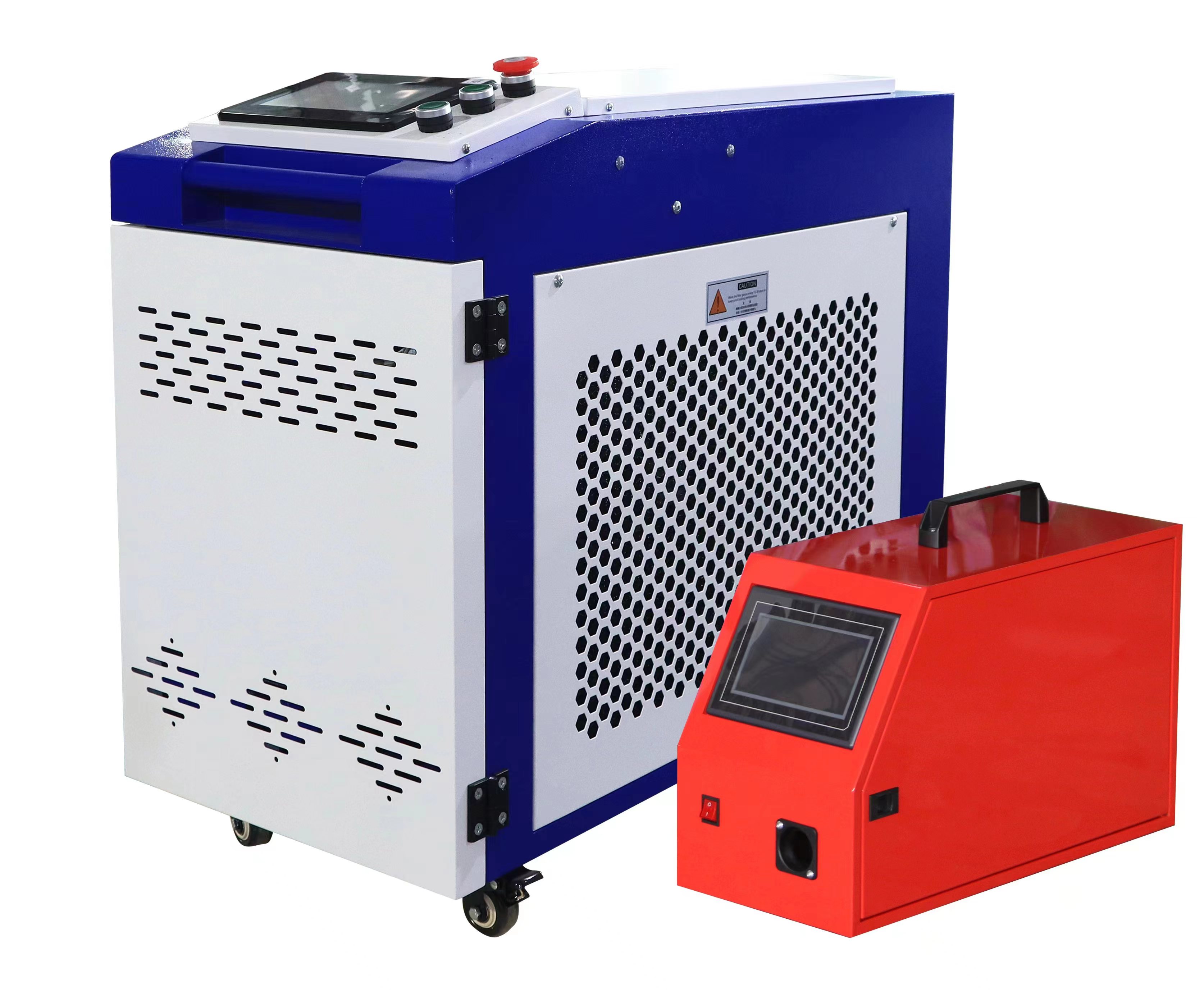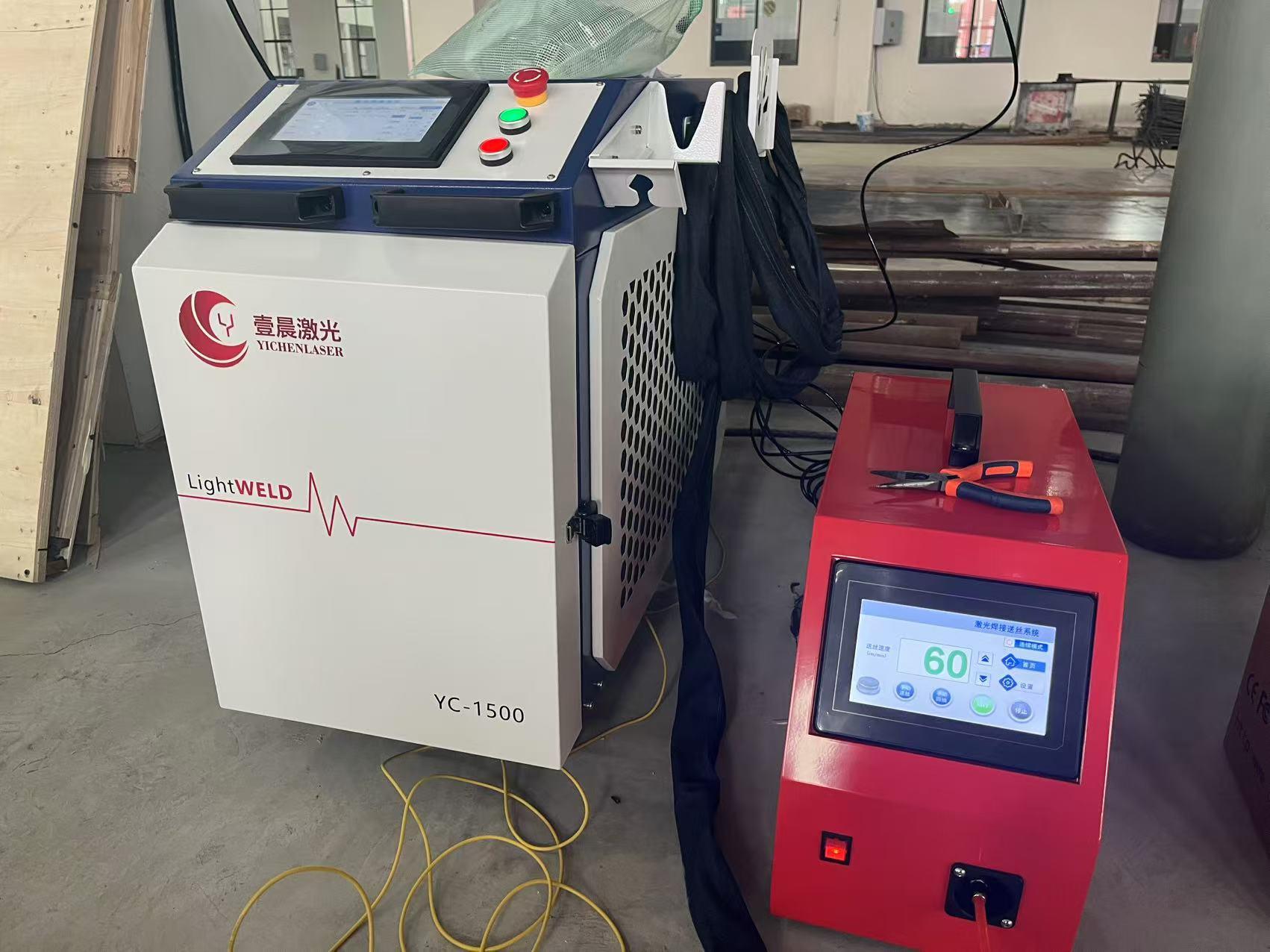Having spent nearly fifteen years in the surface treatment and industrial cleaning industry, I’ve seen my fair share of rusted metal and greasy machinery. From shipyards to automotive workshops, the challenge of tackling heavy rust and oil contamination is a constant. When I first heard about laser rust removal, I was skeptical—could a beam of light really handle the stubborn, thick rust and oily residues that plague industrial equipment? Over time, I’ve not only tested these machines myself but also consulted on projects where they’ve been put to the test. Today, I’ll share my experiences and insights to answer the question: Can laser rust removal effectively deal with heavy rust and oil contamination? Let’s dive in with a practical, no-nonsense look at this cutting-edge technology.

Understanding Laser Rust Removal
For those new to the topic, laser rust removal uses focused, high-energy laser beams to vaporize rust, oxides, and other surface contaminants from metal. The process is non-contact, meaning there’s no abrasive blasting or chemical scrubbing involved. Instead, the laser’s energy breaks down the unwanted material into gas or fine particles, which are then removed by an exhaust system. This makes it an eco-friendly and precise alternative to traditional methods like sandblasting or acid cleaning.
My first hands-on experience with a laser rust removal machine was at a steel fabrication plant in 2017. The operator aimed the laser at a rusted weld joint, and within moments, the surface was pristine. I was hooked, but I quickly learned that not all rust or contamination is created equal. Heavy rust and oil present unique challenges, so let’s explore how lasers handle them.
What Is Heavy Rust?
Heavy rust refers to thick, deeply embedded corrosion that has penetrated the metal surface, often forming flaky or pitted layers. It’s common in environments exposed to moisture, salt, or extreme weather—like marine vessels, bridges, or outdoor machinery. Unlike light surface rust, which is thin and powdery, heavy rust can compromise structural integrity and requires aggressive cleaning to restore the metal.
Oil contamination, on the other hand, includes grease, lubricants, or industrial oils that coat metal surfaces. These are tricky because they can mix with rust, creating a sticky, layered mess that resists traditional cleaning methods. In my work, I’ve seen oil-soaked rusted parts in automotive engines and factory equipment, where cleaning is critical before repairs or coating.

Can Laser Rust Removal Handle Heavy Rust?
The answer is yes, laser rust removal can effectively handle heavy rust, but it depends on the machine’s power, settings, and the operator’s approach. Let’s break it down.
1. High-Power Lasers for Deep Rust
Heavy rust requires more energy to remove than light surface rust. Modern laser rust removal machines come in various power levels, typically ranging from 50W to 2000W or higher. High-power lasers (1000W and above) are particularly effective for heavy rust because they deliver enough energy to vaporize thick oxide layers without damaging the underlying metal.
I once worked on a project restoring rusted railcar components. The rust was so thick it flaked off in chunks. We used a 1500W laser, and it sliced through the corrosion like a hot knife through butter. The key was adjusting the pulse frequency and scanning speed to ensure thorough removal without overheating the steel. Lower-power machines (e.g., 100W) would have struggled with this level of rust, taking much longer or failing to penetrate the deepest layers.
2. Layer-by-Layer Removal
One advantage of laser cleaning is its precision. The laser removes rust layer by layer, allowing operators to control the depth of cleaning. This is critical for heavy rust, where you need to remove corrosion without eroding the base material. Smart sensors in advanced machines can even detect when the rust is gone and stop the laser to prevent over-processing.
In a shipyard project, we used a laser to clean heavily rusted hull plates. The machine’s feedback system alerted us when it reached clean metal, ensuring we didn’t damage the surface. This precision is something traditional methods like grinding can’t match—they often remove healthy metal along with the rust.
3. Limitations with Pitted Surfaces
While lasers excel at removing rust, pitted surfaces (where rust has eaten into the metal, leaving craters) can be challenging. The laser can clean the pits, but it won’t restore the lost material. In such cases, additional surface preparation (e.g., filling or coating) may be needed post-cleaning. I’ve found that communicating this limitation upfront with clients prevents unrealistic expectations.

Can Laser Rust Removal Handle Oil Contamination?
Oil contamination is a different beast, but laser rust removal can handle it effectively in most cases. Here’s how it works and what to consider.
1. Vaporizing Oil and Grease
Lasers don’t just remove rust—they can vaporize organic contaminants like oil, grease, and lubricants. The high-energy beam breaks down these substances into gaseous byproducts, which are extracted by the machine’s exhaust system. This makes lasers ideal for cleaning parts where oil and rust coexist, such as engine components or industrial gears.
I recall a job at an automotive repair shop where we cleaned a rusted, oil-soaked transmission housing. The laser removed both the grease and rust in one pass, leaving a surface ready for inspection. This dual capability saved time compared to using degreasers followed by abrasive cleaning.
2. Pre-Cleaning for Heavy Oil Layers
For thick oil layers, lasers can struggle if the oil absorbs too much of the beam’s energy before it reaches the rust or metal. In these cases, a light pre-cleaning step (e.g., wiping with a solvent or using a low-power laser pass) can help. Some advanced machines have specific settings for oil removal, using shorter pulses to break down the grease without heating the surface excessively.
At a factory I consulted for, we dealt with heavily oiled conveyor parts. A quick solvent wipe followed by a 500W laser pass removed both the oil and rust efficiently. Without the pre-cleaning, the laser would have taken longer and risked creating smoke from burning oil.
3. Environmental Benefits
One thing I love about laser cleaning for oil contamination is its eco-friendliness. Traditional methods often rely on harsh chemical degreasers, which generate hazardous waste. Lasers produce minimal waste—just the vaporized oil and rust, which are captured by the exhaust system. This aligns with the growing demand for sustainable industrial practices.

Comparing Laser Performance on Rust and Oil
To give you a clearer picture, here’s a table summarizing how laser rust removal performs on heavy rust and oil contamination, based on my observations across various projects.
| Contaminant Type | Laser Effectiveness | Best Machine Power | Key Considerations |
|---|---|---|---|
| Heavy Rust | Highly effective | 1000W+ | Adjust pulse frequency; pitted surfaces may need post-treatment |
| Oil Contamination | Effective with prep | 200W–1000W | Pre-clean thick oil; use exhaust to manage vapors |
| Rust + Oil Mix | Effective | 500W–1500W | Optimize settings for dual removal; ensure proper ventilation |
Note: Performance varies by machine model and surface condition. Consult the manufacturer for specific capabilities.
This table reflects real-world scenarios. For example, high-power lasers are overkill for thin oil films but essential for thick rust. Conversely, lower-power machines can handle light oil contamination but may struggle with deeply corroded surfaces.
Real-World Applications
To bring this to life, let’s look at two projects where laser rust removal tackled heavy rust and oil contamination.
Case 1: Marine Vessel Maintenance
A shipyard I worked with needed to clean rusted propeller shafts coated with marine grease. The rust was thick due to saltwater exposure, and the grease had trapped dirt and corrosion. We used a 1200W laser with a dual-pass approach: a low-power pass to vaporize the grease, followed by a high-power pass for the rust. The result was a mirror-like finish, ready for re-coating, with no chemical waste.
Case 2: Factory Equipment Overhaul
In a food processing plant, rusted machinery was contaminated with cooking oil residues. The client wanted a non-chemical solution to meet hygiene standards. A 500W laser with an oil-specific setting removed both the oil and rust in a single session. The machine’s exhaust system captured the vapors, ensuring a clean workspace. This approach saved the client from costly downtime and chemical disposal fees.
Challenges and Practical Tips
While laser rust removal is powerful, it’s not a magic wand. Here are some challenges I’ve encountered and tips to overcome them.

Challenges
Cost: High-power lasers for heavy rust are expensive, often costing $50,000 or more. Smaller businesses may need to rent or opt for lower-power models.
Speed: Heavy rust removal can be slower than abrasive blasting, especially on large surfaces. Patience and proper settings are key.
Ventilation: Oil vaporization produces fumes, so a robust exhaust system is essential to maintain air quality.
Training: Operators need training to optimize settings for rust and oil, especially on mixed contaminants.
Tips
Test First: Always test the laser on a small area to dial in settings for rust thickness or oil type.
Use Protective Gear: Even with smart safety features, wear laser-safe goggles and ensure proper ventilation.
Maintain the Machine: Clean the laser lens regularly to maintain efficiency, especially after oil-heavy jobs.
Consult Experts: If you’re new to lasers, work with a supplier who offers training or on-site demos.
Plan for Post-Treatment: For pitted surfaces or oil residues, budget for additional steps like coating or polishing.
The Future of Laser Cleaning for Rust and Oil
The technology is evolving rapidly, and I’m excited about what’s on the horizon. Manufacturers are developing hybrid laser systems that combine different wavelengths for better oil and rust removal. For example, one wavelength could target organic contaminants like grease, while another tackles oxides. I’ve also heard about AI-enhanced lasers that analyze surface conditions and adjust settings in real time, reducing the need for operator input.
At a recent industry conference, a vendor showcased a prototype with integrated spectroscopy, which could identify oil types and rust compositions on the fly. While these advancements are still in early stages, they promise to make laser cleaning even more versatile for complex contaminants.

Wrapping Up
After years of working with laser rust removal, I can say with confidence that it’s a game-changer for tackling heavy rust and oil contamination. High-power lasers can blast through thick corrosion, while precise settings handle greasy residues without chemicals. Whether you’re maintaining industrial equipment, restoring vintage vehicles, or preparing surfaces for coating, this technology delivers results that traditional methods struggle to match.
That said, success depends on choosing the right machine, optimizing settings, and understanding the surface you’re working with. If you’re dealing with heavy rust or oil-soaked parts, laser cleaning is worth exploring—just be prepared for an upfront investment and a learning curve. The payoff? Cleaner surfaces, less waste, and a process that’s as satisfying to watch as it is effective.

Related Questions and Answers
Q: Is laser rust removal faster than traditional methods for heavy rust?
A: It depends. For precision cleaning, lasers are often slower than sandblasting but produce better results with less material loss. High-power lasers can speed up the process for heavy rust.
Q: Can lasers remove oil without leaving residues?
A: Yes, lasers vaporize oil completely in most cases. For thick layers, a pre-cleaning step may be needed to ensure no residues remain.
Q: Are there safety risks when removing oil with lasers?
A: The main risk is fumes from vaporized oil. Use a machine with a strong exhaust system and work in a well-ventilated area to stay safe.
Q: What types of metals can lasers clean when dealing with rust and oil?
A: Lasers work on most metals, including steel, aluminum, copper, and brass. Always adjust settings to avoid overheating sensitive metals like aluminum.
Q: How do I choose a laser machine for both rust and oil removal?
A: Look for a machine with adjustable power (500W–1500W is versatile), oil-specific settings, and a reliable exhaust system. Demo the machine if possible to ensure it meets your needs.






